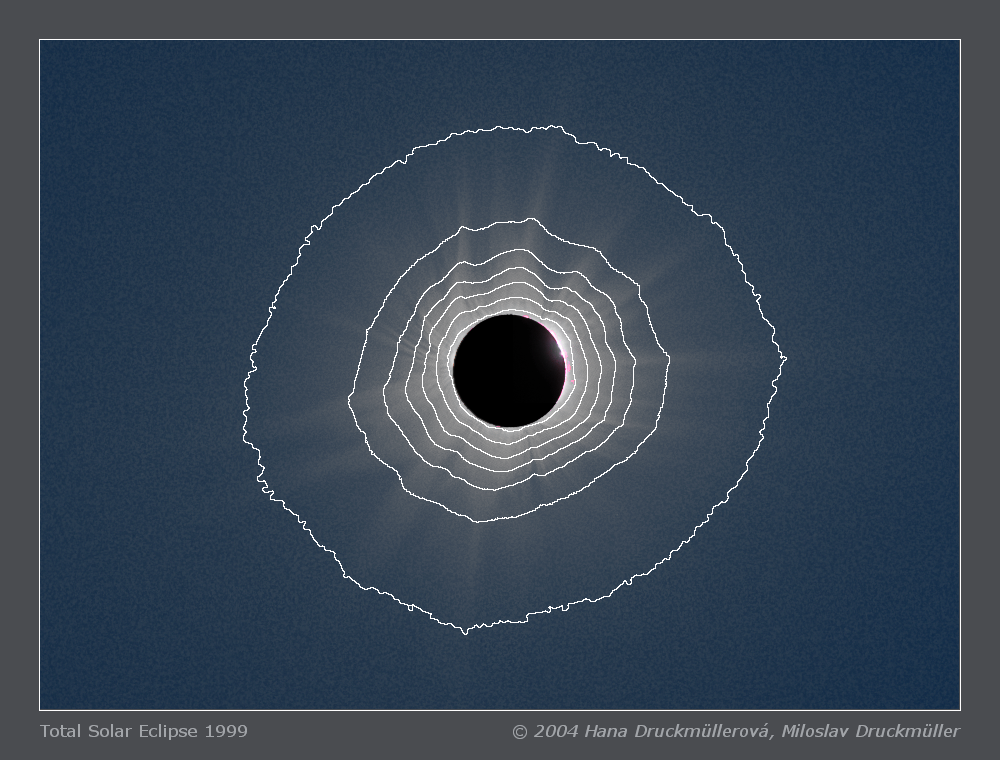| Image | Se1999n_iso1.png |
| Date | 11. 08. 1999 |
| Time | Second contact 10:50:37 UT, third contact 10:53:00 UT
Total eclipse duration 2 min 23 s |
| Place | Hungary, 2 km SSE from Németkér village |
| Coordinate | N 46° 41' 36'', E 18° 47' 14'' |
| Conditions | Excellent, clear sky. (Solar altitude 59° above horizon) |
| Optics | Maksutov - Cassegrain MTO 1000a, 10.5/1084mm and Sonnar 2.8/200mm |
| Resolution | 17.3 arc sec / pixel (image on this Web page) |
| Film | Fujicolor Superia 800 (for MTO), Agfacolor HDC 400 Plus (for Sonnar) |
| Processing | Adaptive processed composition of 27 images (6 taken with Sonnar, 21 taken with MTO) with brightness isolines overlay
Image processing by Miloslav Druckmüller |
| Scanner | Nikon Super Coolscan 4000 ED (4000dpi resolution, 16× multisample) |
| Software | Sofo ACC 6.0, Corona 3.0, PhaseCorr 3.0 |
| Orientation | The image must be rotated 11.8° clockwise to achieve the standard orientation i.e. North top, East left |
| More info | Complete set of processed images and animation including many texts about Sun and solar eclipses was published on multimedia CD: Miloslav Druckmüller, Journey to Solar Eclipse, AION and WOLF RECORDS, 2000 |
| Copyright | © 2004 Hana Druckmüllerová and Miloslav Druckmüller |

